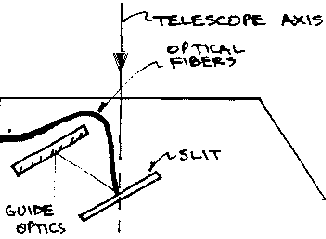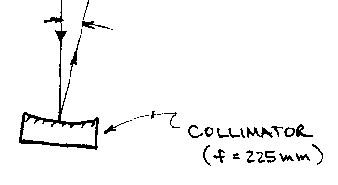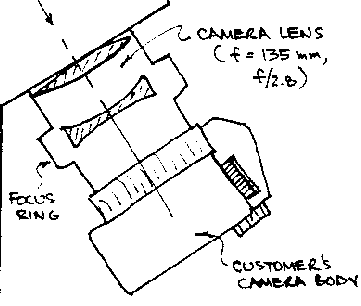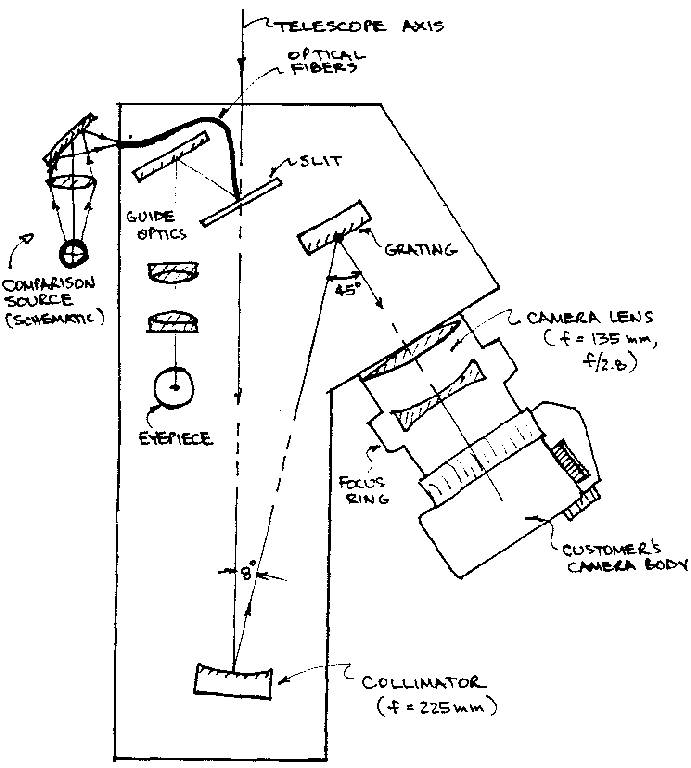



Many people know how a telescope works, but relatively few have much experience with the innards of a spectrometer. So let's take apart the Astronomy Camp spectrometer to see how it works! Keep in mind that there are as many optical designs for spectrometers as there are optical designs for telescopes, and that this is but one example. Nevertheless, it points out the salient features of most optical spectrometers.
 |
It all starts with the telescope light beam entering the spectrometer. The focal point of the telescope beam is brought to the slit of the spectrometer. This slit is what is ultimately imaged on the detector. In the case of the Camp spectrometer, the slit is arranged at an angle and the slit surroundings are silvered so that the portion of the telescope beam not passing through the slit can be routed instead to an eyepiece for easy telescope guiding. |
 |
The light passing through the slit then is reflected off a collimating mirror, which parallelizes the beam of light, before sending it off... |
 |
... to the diffraction grating! This optical element disperses the parallel beams of light into their component colors/wavelengths/energies. Each different wavelength comes off of the grating at a slightly different angle. So now, we have an image of the slit that is spread out like a rainbow by color. |
 |
This new color-dispersed beam of light is then focused and imaged on the detector by the camera lens. A 35 mm camera is the detector in this diagram, but at Camp, we typically use an eyepiece or a CCD array. |

The broader you disperse the light and the narrower you make the slit, the better your spectral resolution; you can see finer and more subtle features in the spectrum. However, there is a stiff price to pay: the emergent spectrum becomes much dimmer and more diffuse. High resolution spectroscopy therefore requires large telescopes and fairly bright objects. For very faint objects, some spectral resolution often must be compromised to even SEE the object.